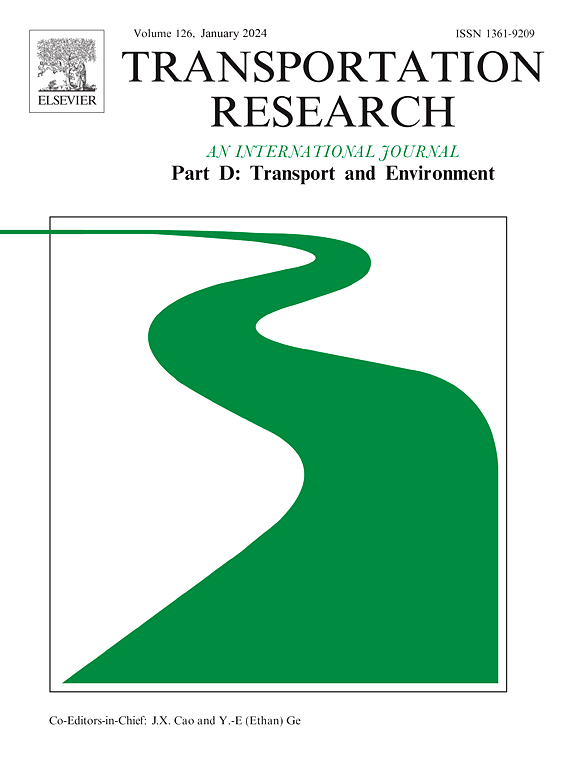家庭交通全生命周期温室气体排放预测
IF 7.3
1区 工程技术
Q1 ENVIRONMENTAL STUDIES
Transportation Research Part D-transport and Environment
Pub Date : 2025-02-18
DOI:10.1016/j.trd.2025.104660
引用次数: 0
摘要
本研究开发了一个模型来预测家庭运输生命周期温室气体(GHG)排放,并确定了这些排放的最强决定因素。研究了许多变量对家庭交通温室气体排放的影响。十种机器学习方法用于建模和预测。然后应用Shapley加性解释来检测变量对家庭温室气体排放的相对影响。部分依赖图也用于捕捉顶级变量对家庭温室气体排放的影响方向。进一步的分析表明,考虑排气管排放而不是生命周期排放会导致温室气体排放量低估约20%。用电动汽车取代所有汽油汽车将使蒙特利尔的温室气体排放量减少57%。然后,确定了满足加拿大政府运输温室气体目标所需的模式转变。最后,运用情景分析方法,提出了若干种温室气体排放情景。本文章由计算机程序翻译,如有差异,请以英文原文为准。
Household transportation lifecycle greenhouse gas emission prediction
This investigation develops a model to predict household transportation life-cycle greenhouse gas (GHG) emissions and identifies the strongest determinants of these emissions. The impact of many variables on household transportation GHG emissions is examined. Ten machine learning methods are used for modeling and prediction. Shapley additive explanation is then applied to detect the relative influence of variables on household GHG emissions. Partial dependency plots are also employed to capture the direction of influence of top variables on household GHG emissions. Further analyses suggest that considering tail-pipe emissions rather than life-cycle emissions leads to underestimating the GHG emissions by roughly 20%. Replacing all gasoline vehicles with electric vehicles would reduce GHG emissions in Montreal by 57%. Then, the modal shifts required to meet the Government of Canada’s goals for transportation GHGs are determined. Finally, a scenario analysis is applied, and a number of GHG emission scenarios are presented.
求助全文
通过发布文献求助,成功后即可免费获取论文全文。
去求助
来源期刊
CiteScore
14.40
自引率
9.20%
发文量
314
审稿时长
39 days
期刊介绍:
Transportation Research Part D: Transport and Environment focuses on original research exploring the environmental impacts of transportation, policy responses to these impacts, and their implications for transportation system design, planning, and management. The journal comprehensively covers the interaction between transportation and the environment, ranging from local effects on specific geographical areas to global implications such as natural resource depletion and atmospheric pollution.
We welcome research papers across all transportation modes, including maritime, air, and land transportation, assessing their environmental impacts broadly. Papers addressing both mobile aspects and transportation infrastructure are considered. The journal prioritizes empirical findings and policy responses of regulatory, planning, technical, or fiscal nature. Articles are policy-driven, accessible, and applicable to readers from diverse disciplines, emphasizing relevance and practicality. We encourage interdisciplinary submissions and welcome contributions from economically developing and advanced countries alike, reflecting our international orientation.

 求助内容:
求助内容: 应助结果提醒方式:
应助结果提醒方式:


